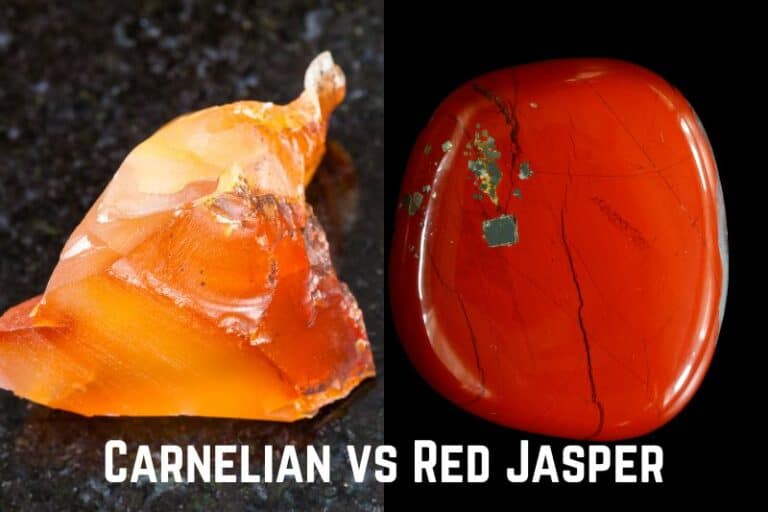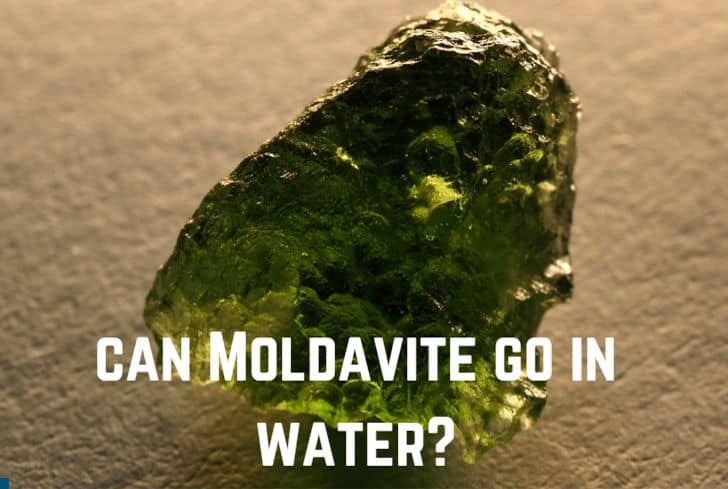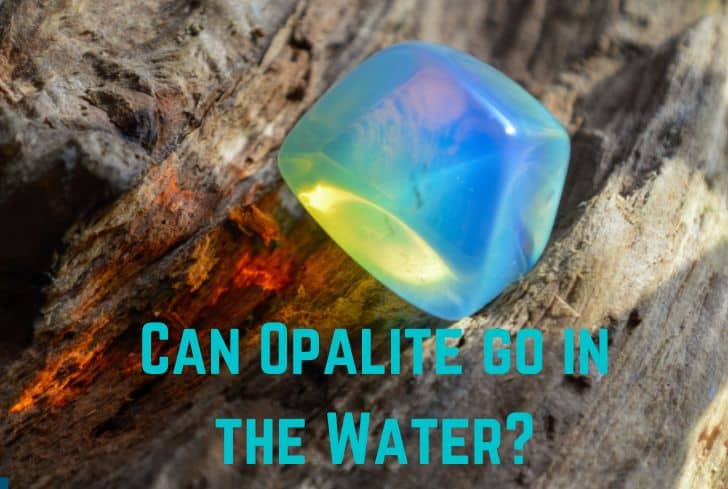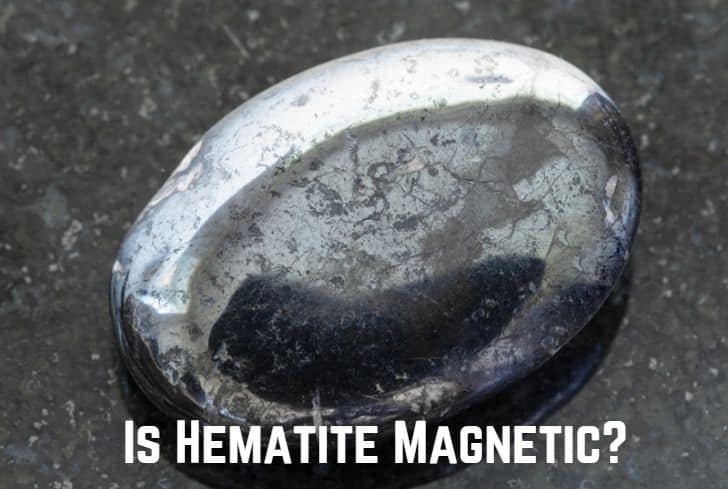Can Serpentine Go in the Water? (Answered)
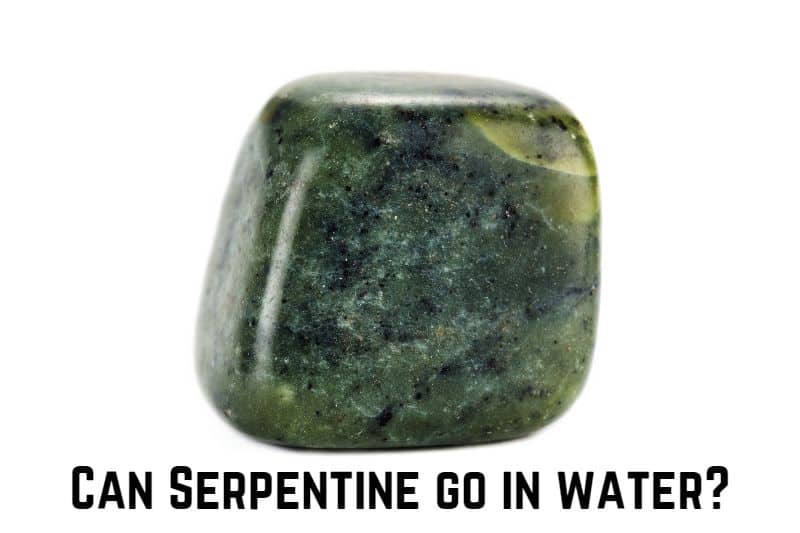
Serpentine is not a singular stone but a group of minerals that are primarily composed of hydrated magnesium silicate. These minerals are usually green in color, and they are used for a variety of purposes: gemstones, architectural material, asbestos, etc.
Have you ever wondered if serpentine can go in the water? In this article, we are going to discuss just that. We will talk about the stone’s interaction with water, salt, and sun. Then we will learn about cleaning and taking care of serpentine. Finally, we will look at its properties & uses.
Read: Can Peridot Go in the Water? (Yes…)
Can Serpentine Get Wet?
Yes, serpentine can be quickly rinsed with water. However, it is not recommended to immerse it in water for long as it is a soft mineral, having a value of 3 to 6 on the Mohs Hardness Scale. This is partly below the minimum value required for minerals to be safe underwater.
Mohs Hardness Scale is a relative measure of a mineral’s resistance to scratching. Besides that, it also indicates a stone’s relationship with water. Usually, a value over 5.0 implies that the stone is safe for immersion.
Serpentine is a collection of various minerals. These minerals can contain magnesium, iron, nickel, silicon, aluminum, etc. Depending on its composition, a particular serpentine mineral can range between 3 to 6 on the Mohs Hardness Scale.
This means that a serpentine stone may or may not be safe in water. Therefore, it is best only to rinse the stone while cleaning and not immerse it in water for long. In general, no stone should be immersed in water for too long. Water enters the crevices of stones, expanding their cracks.
These fissures can slowly damage the structure of the stone, making it prone to cracking. Water also tarnishes the appearance of stones. It strips off the polish from their surface, making them look duller. Serpentine is often used in gemstones, so we do not want to harm its beautiful appearance.
Therefore, serpentine should only be quickly rinsed with water; it should be immersed for prolonged periods.
Can Serpentine Go in the Saltwater?
No, it is not recommended to put serpentine in salt water. Water itself is a little dangerous for serpentine since it is a soft mineral. Bringing salt into the mix will only make things worse as it exacerbates the corrosive effect.
A serpentine stone is usually soft and can have a hardness ranging between 3 to 6 on the Mohs Hardness Scale. Since this is partly below the minimum value (5.0) required for minerals to be safe underwater, the stone can potentially get damaged by immersion.
When we bring salt into the mix, the damage will be even worse. When dissolved in water, salt can seep into the crevices of the stone. Salt particles remain there even after the water evaporates, and they widen the cracks. These fissures can slowly damage the structure of the stone.
Salt water also tarnishes the appearance of the stone by stripping off the polish. Finally, salt can also react adversely with the elements of the mineral, especially those like serpentine having iron.
Saltwater hastens the process of rusting by making the metal lose its electrons more easily. Therefore, it is best not to immerse serpentine in salt water.

Can Serpentine Go in the Sun?
Yes, serpentine can go in the sun. Placing stones in sunlight is a popular way of recharging them, and it is perfectly safe for serpentine. Just make sure you do not leave it out for too long.
Some stones, such as amethyst and calcite, are unsafe to go in the sun. Their color can get faded, and they make also get brittle due to excessive heat. However, serpentine is not one of them, and it is perfectly safe in the sun.
You can place it out in direct sunlight for a few hours. Placing it on a windowsill may also be a great idea as the glass will protect it against UV rays. The morning and evening hours are great if you want gentler sunlight instead of the strong afternoon sun.
You can also try recharging your serpentine stone with moonlight. Just put it at a place that receives good moonlight and leave it there overnight. A full moon night is best for this method.
How Do You Clean Serpentine Stone?
Serpentine stone is a soft stone that has a hardness ranging between 3.0 to 6.0 on the Mohs Hardness Scale. So, it is not recommended to soak it in water for long. However, we can still clean it with a quick rinse:
- Mix mild soap water with lukewarm water. Make sure that the water is not too hot, as excessive heat can damage the stone.
- Quickly rinse the stone with this solution and wash off any excess soap.
- Let the stone dry in the air. Make sure you flip it around to remove any water from the crevices.
You can also wipe the stone with a soft cloth, which does not have abrasive materials such as rouge.
How do You Take Care of a Serpentine Stone?
Make sure you follow these to take care of your serpentine stone:
- Do not use steaming, ultrasonic, or boiling methods to clean your stone, as they can damage it. Instead, use the mild soap and water method we discussed above. You can also treat the stone’s surface with a protective penetrating sealer to prevent stains.
- Serpentine is quite a soft stone, having a value of 3 to 6 on the Mohs Hardness Scale. It can get scratched easily, so you should not keep it close to other crystals. Serpentine jewelry should also be worn with care. Do not engage in straining activities (gardening) while wearing serpentine.
- Serpentine is susceptible to acids. So, do not use bleach, ammonia, or other general-purpose cleaners for the stone. Most cleaners contain chemicals that may harm the stone; instead, look for products specifically designed for serpentine.
Properties of Serpentine
These are the properties of serpentine:
- Appearance: Serpentine minerals are typically green, but they come in a variety of colors. Antigorite can range from yellowish-green to bluish-gray; lizardite can be white or light yellow; chrysotile ranges from greyish-green to white. The green color, patterned appearance, and slippery feel is the most common feature among most stones. This is similar to a snake’s skin, which is why the stone is named serpentine.
- Composition: Serpentine is a group of hydrous magnesium iron phyllosilicate minerals. These minerals have a generalized formula of (X)2-3(Y)2O5(OH)4. Here, X can be one of magnesium, iron, nickel, aluminum, zinc, or manganese; Y will be silicon, aluminum, or iron. Many serpentine stones are intergrown with other minerals, such as calcite and dolomite.
- Structure: Serpentine minerals are polymorphous, meaning that they can exist in several crystal structures. Chrysotile, antigorite, and lizardite are the three most common serpentine minerals. Chrysotile has a fibrous habit, while the other two have a platy habit. Serpentine has almost perfect cleavage. The stone is both soft and brittle, so it needs to be handled with extra care.
Besides these, serpentine is also believed to have spiritual properties. It is said to provide clarity of thought, which allows better meditation. Serpentine ultimately encourages spiritual understanding and calmness.
Read: Can Moonstone go in the Water? (And Salt Water, Sunlight?)
Uses of Serpentine
These are the uses of serpentine:
- Architecture: For thousands of years, serpentine has been used as an architectural stone. It has attractive patterns, is easy to work with, and has a nice luster after being polished. Its hardness ranges between 3 to 6, so this limits its use in surfaces that do not receive excessive wear & tear, such as wall tiles, mantles, window sills, etc.
- Asbestos (Insulation): Some serpentine minerals (such as chrysotile) have a fibrous habit, which does not transfer heat. They also do not burn easily, therefore serving as excellent insulators. Serpentine is a common mineral and easy to mine, so these heat-resistant fibers could be obtained easily.
- Gemstones: Serpentine can be cut into a variety of gemstones because the stone is easy to polish and looks beautiful after finishing. It is usually used to make cabochons and beads, which range from green to black colors. Unlike stones like jasper, serpentine does not have a glassy look; instead, it has a waxy luster, which is attractive in its unique way.
Serpentine was quite popular till the mid-20th century, but then it was discovered that the mineral can lead to lung and other cancers. After that, its use has significantly reduced, and there have been many programs to remove it.
Conclusion
In this article, we have looked at the interaction of serpentine with water. Serpentine is a group of minerals whose hardness range from 3.0 to 6.0 on the Mohs Hardness Scale. Since this is partly below the minimum value (5.0) required for minerals to be safe underwater, it is not recommended to soak the stone for long periods. Instead, it can be cleaned with a quick rinse in soap water. We also looked at the properties and uses of the stone.

